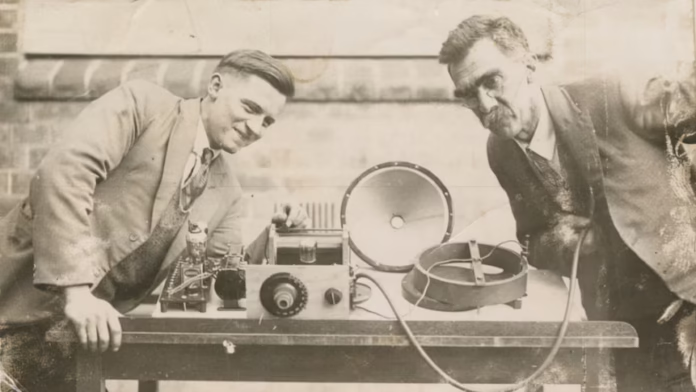In Australian invention history, Edward “Ted” Both and his brother Donald Both were once prominent figures. Their South Australian factory produced groundbreaking technologies like heart monitors, wooden respirators, electric delivery vans, and Olympic scoreboards in the mid-20th century. Despite their significant impact, today, few Australians remember their contributions, except through some museum exhibits and family stories. They were once celebrated as Australia’s answer to Thomas Edison.
Humble Beginnings in Rural South Australia
Ted and Don, born in Caltowie near Port Pirie, were the oldest and youngest of five siblings. Growing up in the country, they learned self-reliance. Kaylene Kranz, a relative who babysat them, said you couldn’t just call for help; you had to adapt and make do. This self-sufficient mindset fueled their innovative partnership—Ted excelled in precise engineering, while Don thrived with his entrepreneurial spirit.
A Dynamic Duo: Complementary Skills, Shared Vision
Dad was organized, while Don was the visionary handling business. Together, they formed a powerful duo. Their differing strengths were key to creating many practical, innovative devices. Despite their contrasting minds, they collaborated to invent remarkable things.
Wartime Innovations and Early Recognition
During World War II, Ted Both’s shop focused on military innovations. His team created a machine-gun fire counter, an early fax machine called the Visitel, a portable blood-drying unit for transfusions, and torpedo guidance technology. By the war’s end, newspapers hailed Ted as “Australia’s Edison,” a title he disliked. He told The Advertiser in 1950 that invention is not about sudden inspiration but a meticulous process of verifying each step.
Electric Vehicles: Beating Rationing in the Post-War Years
In the late 1940s, as petrol rationing persisted, the Boths focused on mobility. Don’s electric scooter prototype didn’t hit mass production, but their three-wheeled electric bread delivery vans were active in suburbs until the decade’s end. Patent drawings reveal a compact design powered by lead-acid batteries, marking an early step in zero-emission transport. “They saw the need and crafted a practical solution,” notes Branson.
Sporting Technology for the 1956 Melbourne Olympics
When Melbourne secured the 1956 Olympics, the Both workshop ventured into sports technology. They first created tennis-court scoreboards for the Davis Cup. Then, at the Melbourne Cricket Ground, they constructed a massive 14,000-light globe scoreboard, the largest then, needing several operators to update scores live. The Both brothers’ innovations thrilled audiences and became an Olympic sensation, even as their names became less known.
Revolutionizing Polio Treatment with the Wooden Lung
In healthcare, the Both brothers left a lasting impact. In 1937, inspired by his wife Eileen, Ted Both aimed to create a cheaper alternative to the iron lung for polio patients. He crafted a “wooden lung” using plywood, significantly reducing costs to about one-twentieth of the original. This innovation quickly spread, with hundreds in use across the British Commonwealth. Ted’s contribution earned him the title of Officer of the Order of the British Empire (OBE). Branson notes, “Visitors’ eyes light up when I show them the wooden iron lung.” This invention was a pivotal step in making essential treatment more accessible.
Portable Humidicribs: Caring for Premature Infants
Don Both revolutionized neonatal care by creating a portable humidicrib in the early 1950s. Traditional humidicribs were large and stationary, limiting their use. Both’s innovative design featured a lightweight frame and simple controls, allowing it to be easily moved to a bed or even transported in a car for home care. This breakthrough enabled hospitals across South Australia to adopt the design, significantly boosting survival rates for premature infants.
Instant Electrocardiographs and Early EEGs
Building on ECG concepts, the Both brothers revolutionized heart monitoring by turning a slow film process into instant readouts. Their early portable ECG featured a microscope on a wooden box, enabling immediate heart-signal viewing. Later models improved with heated styluses on waxed paper, creating real-time graphs for bedside use. They also advanced EEG technology, simplifying brain wave measurement. Kranz, a former technician, recalls using Both-designed EEG equipment in a neurology lab, describing it as an incredible experience with a family invention.
Form and Function: Designing for Patient Comfort
The Boths valued aesthetics alongside technical skill. Their ECGs, with wooden frames, herringbone designs, and leather handles, looked more like vintage sewing machines than medical devices. This familiar appearance was intentional to ease patient anxiety, as noted by Branson. At the South Australian Parliamentary Library, where Dr. John Weste showcases Both equipment, visitors frequently admire the craftsmanship. Weste highlights the elegant execution and the Gothic-font ‘Both’ logo, which reflects their German roots.
From Industry Leader to Unsung Heroes
In the 1960s, the Both company was sold to Drug Houses of Australia. Advances in plastics and electronics soon overshadowed their wooden and metal designs. Ted Both passed away in 1987, and Don followed in 2005. Their gravesite features a modest marker stating: “Ted Both, OBE, 1905–1987.” Branson notes the absence of any mention of Ted’s inventions. It’s a simple tribute for a man whose innovations saved countless lives.
Preserving Their Legacy
Museums and curators strive to highlight the Both brothers’ legacy. The SA Health Museum lends original respirators and ECGs for school displays. Kranz advocates for regional inventors in local education. “South Australia has many unrecognized innovators,” she states. “We must ensure future generations recognize local achievements.
Conclusion: Rediscovering Australian Innovation
Edward and Donald embody a distinct Australian ingenuity—practical, adaptable, and necessity-driven. Their innovations ranged from World War II battlefields to polio treatment wards, and from post-war transport to Olympic spectacles. However, over time, their names vanished from public memory.
Historians and enthusiasts aim to honor the Both brothers’ legacy in Australia’s history of innovation by highlighting their creations, like the plywood iron lung and instant ECG box. As Kranz notes, medicine has evolved dramatically, yet it began with simple, imaginative solutions crafted with skill and a drive to address real issues.
READ MORE: Magnetic Cooling Breakthrough Unveiled with Atacamite Mineral
